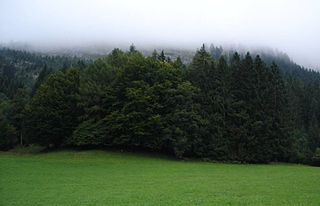From Guest Blogger Chris Long: Sustainable Forestry — A Look Behind the Label

But what about other labels recognized by the world’s largest forest certification organization, the Programme for the Endorsement of Forest Certification (PEFC), such as the:
- Sustainable Forestry Initiative (SFI)
- American Tree Farm System (ATFS)
- Canadian Standards Association’s Sustainable Forest Management System (CSA SFM)
The issue comes down to whether or not you’re looking to earn extra points for a LEED-certified home. If not, then there are plenty of good reasons to look into using sustainable lumber from other reputable organizations. In fact, the FSC currently only certifies about 191 million hectares of forest globally. That sounds like a lot at first, but not when you consider that forests comprise more than 4 billion hectares of the world’s land surface, which puts FSC’s coverage at a little less than 5%.
Sustainable Forestry Initiative (SFI)
Certification coverage: 79.7 million hectares (United States & Canada)
You’ve probably seen the SFI label around the lumber store before. Along with the little green tree-in-leaf logo, the labeling usually includes a percentage of certified forest content, certified sourcing and percentage of post-consumer recycled content. All of these fall under the SFI’s Certified Chain of Custody labeling. To earn an SFI Chain of Custody label, a program participant must conform to more than 15 objectives, including:
- forest management planning and adherence to best management practices
- conservation of biological diversity, hotspots and wilderness areas
- protection and maintenance of water resources
- avoidance of controversial sources such as illegal logging and fiber sourced from areas without effective social laws
- long-term forest productivity through reforestation, soil conservation, afforestation and other measures
While controversy over the SFI label has been expressed by organizations such as the Sierra Club, other organizations, such as TerraChoice, list it next to the FSC as a second-tier legitimate source of environmental standards and certification.
American Tree Farm System (ATFS)
Certification coverage: 10.5 million hectares (United States)
Unlike the FSC and SFI, the American Tree Farm System focuses more on stewardship and the long-term ecological and economic sustainability of America’s forests rather than on fiber production. As the oldest woodland certification organization in the United States, the ATFS, a division of the American Forest Foundation, has been certifying privately owned forests since 1942.
With a focus specifically on certifying small woodland owners, the ATFS’s standards are written to correlate with the US Forest Service’s guidelines for forest stewardship and management. This means that certified lands must have and follow forest management plans that:
- actively and sustainably manage forests
- manage and reduce risks to forest and ecosystem health
- enhance soil conservation, air and water quality, and biological diversity
- protect, conserve and enhance wildlife and fish habitat
- manage and restore trees and forests to mitigate and adapt to global climate change
Canadian Standards Association’s Sustainable Forest Management System (CSA SFM)
Certification coverage: 50 million hectares (Canada)
The Canadian Standards Association’s Sustainable Forest Management System (SFM) launched in 1996 and follows the criteria established by the Canadian Council of Forest Ministers. The goal of SFM is to create an internationally accepted standard for sustainable forest management and as such, the program follows both national and international initiatives to develop its criteria.
Participants in the SFM range from small landowners to large corporations and each participant is required to undergo recertification audits every three years. Along with these regular audits, participants must follow management plans that:
- recognize and uphold environmental, economic, social and cultural values
- conserve the area’s biological diversity
- involve ongoing public participation
Apart from its recognition by the Programme for the Endorsement of Forest Certification (PEFC), the SFM also meets the requirements set forth by the United Kingdom’s Central Point of Expertise on Timber Procurement for legality and sustainability, and is accepted by several international governments including France, Japan, New Zealand and Germany.
There are a number of sustainable forestry certification programs out there, several in the United States alone, and many of them are recognized by the PEFC as well as other national sustainability foundations. And while these organizations fight to be recognized by programs such as the Green Building Council, they continue to maintain high standards in regard to the maintenance, sustainability, growth and protection of the world’s forestland.
